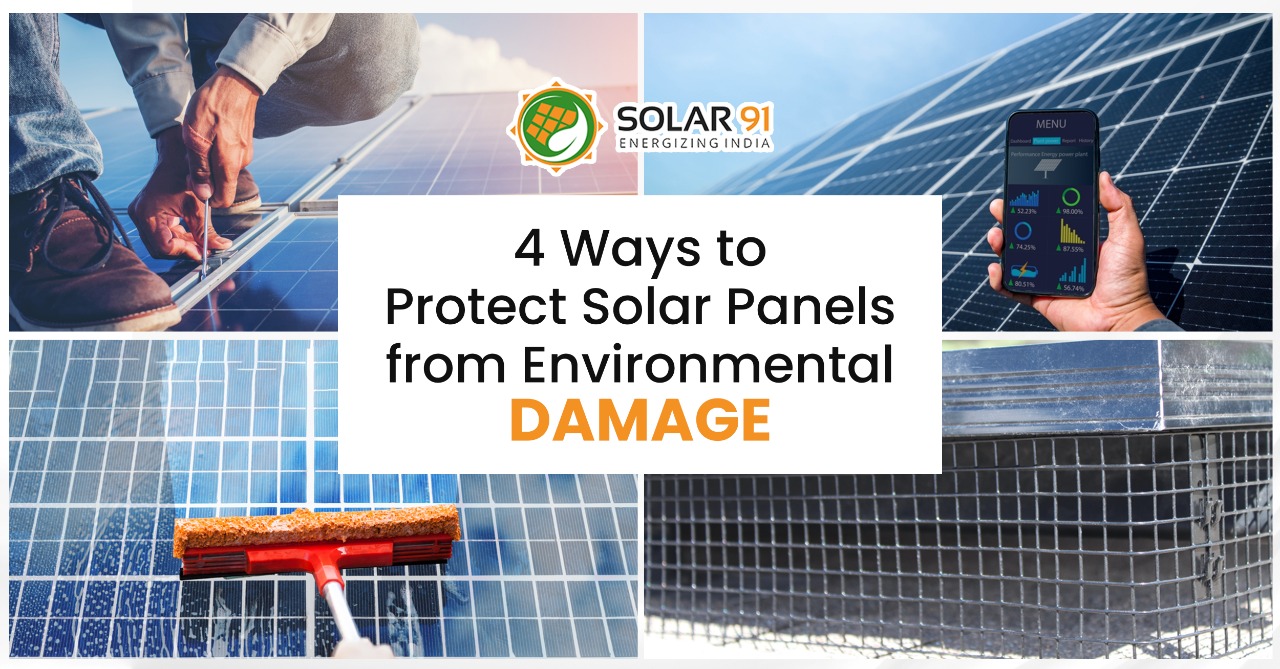4 Ways to Protect your Solar Panels from Environmental Damage
Solar Panel is one of your most efficient investments. They are durable and energy-saving and offer the best alternative to coal power. Solar Energy being the most reliable and environmentally friendly source of energy, gives you the maximum output for your investment. To harness maximum solar energy, solar panels are installed on the rooftop, in an open area where it can receive maximum sunlight.
As these panels are installed in an open space, it is being subjected to many factors that can harm their efficiency. Some of these factors include – animal dropping, heavy rainfall, and some other adverse weather conditions. Any new technological equipment requires regular maintenance and little care. Although with their efficient durability, solar panels can withstand most weather conditions, yet it is necessary to prevent unnecessary damage.
Factors affecting the productive efficiency of Solar Panels:
- Bird/Animal droppings
- Snowfall
- Weather conditions
- High temperatures leading to excessive heat
- Lightening
Here are the four ways to Protect your Solar Panels from Environmental Damage
Pruning Plants near the Panels
You may sometimes find the debris or torn leaves of plants being spread on your solar panels. Even if none of the branches of trees fall or shade your panels, it can still leave scratches on the solar panel screen. This kind of damage can reduce the functional ability of the solar panels, due to which the solar panels might not be able to absorb enough sunlight as its inbuilt productive capacity. When dents and scratches are accumulated, it can even render the equipment useless, which will then require a repair or a replacement. You can appoint a professional or trim the leaves and branches around the panels yourself.
Retained Walls
Retained Walls are used for solar panels that are installed on the grounds. It protects solar panels by reducing erosion. Soil erosion occurs when excessive rain washes away dirt and sand from the ground. As the solar panels are chipped and stacked on the ground, soil erosion can affect its agility easily. If soil erosion is frequent, it can loosen the foundation of solar panels as they are fixated directly in the sand. In such a way, solar panels can even collapse and even suffer severe damage.
Concrete retaining walls provide an impenetrable barrier to wind, rain, and other erosive elements. They’re particularly useful for non-residential applications like solar farms and business facilities. Retaining walls have the advantage of lasting for decades without needing to be replaced or repaired. As they are made to withstand adverse weather conditions and prevent soil erosion, these walls are made of strong material. Install them once, and they’ll keep your solar PV secure for the rest of your life.
Weather Protection
In weather conditions like heavy rainfall, a solar panel installed on the rooftop can suffer some serious damage from lightning strikes. To protect solar panels from such damage, businesses and homeowners can install lightning rods on their properties. To minimize electrical harm to both the panels and the owners, adequate grounding is required when installing any PV system on the grounds, as lightning can also strike on the grounds. If the lightning has struck anywhere near the installation, its impact can damage your solar panels. It’s important to remember that harm can occur without a direct hit. High voltages are introduced into the system by indirect strikes, causing components to catch fire. Make sure that the installed rods are enough to support your complete solar panel system.
Sometimes, strong winds can also be dangerous to the solar panels. Secure anchoring is ensured to keep the solar panels intact at their place. This provides stability to solar panels at the time of wind storms or adverse weather conditions. Your solar panels might already have it, but it’s better to be on the safe side, and have your equipment checked. You can either upgrade the anchoring system or add new components to insert better protection.
Panel Sealing for waterproofing
Just like windows and doors, solar panels have seals on them. Seals prevent water from flowing in at the time of rain. This seal can wear out over time allowing water to get inside the system, leading to short-circuit. You may not realize it till the time the panels have completely stopped working. Your solar panel already has sealants but it is better to keep a check and assure maintenance from time to time.
Prevent short-circuits by examining and resealing any fading seals on your panels on a regular basis. Silicon-based sealants are ideal for repairing PV frameworks, and usage is also very simple. If the seal between the roof and the panel show indications of wear and tear, you may need to replace it.
Conclusion
Weather conditions affect the output of solar panels, yet they are worth the investment. Solar panels are built to meet all of the industry’s standards and are mechanically tested against a variety of environmental problems. Yet there are some factors that even a mechanically tested and well constructed solar panel cannot withstand. Hence, as a consumer, your role is just to take care of your solar panels by protecting them and keeping them well ma

